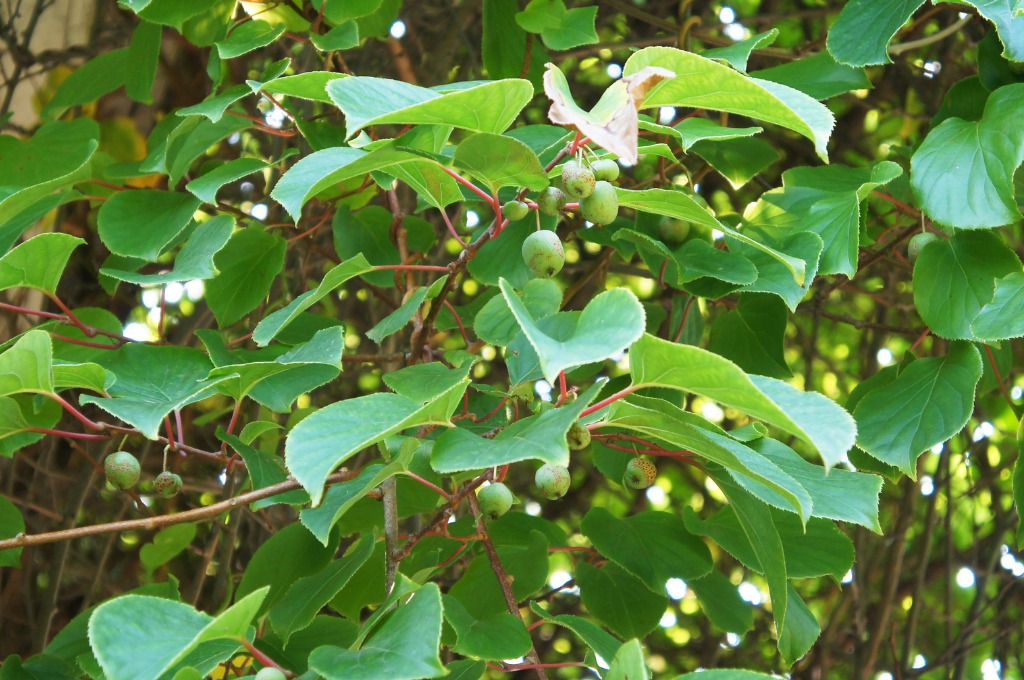Hardy kiwi
(Actinidia arguta)

Description
Actinidia arguta, the hardy kiwi, is a perennial vine native to Japan, Korea, Northern China, and the Russian Far East. It produces a small kiwifruit without the hair-like fiber covering the outside, unlike most other species of the genus. The fruit is referred to as Siberian gooseberry, Siberian kiwi, hardy kiwifruit, kiwi berry, arctic kiwi, baby kiwi, dessert kiwi, grape kiwi, northern kiwi, or cocktail kiwi, and are edible, berry- or grape-sized fruit similar to kiwifruit in taste and appearance, but are green, brownish, or purple with smooth skin, sometimes with a red blush. Often sweeter than the kiwifruit, hardy kiwifruit can be eaten whole and do not need to be peeled. Thin-walled, its exterior is smooth and leathery. The fast-growing, climbing, twining vine (bine) is very hardy (hence the name hardy kiwi), and is capable of surviving slow temperature drops to -34 °C (-30 °F), although young shoots can be vulnerable to frost in the spring. The vines need a frost-free growing season of about 150 days, but are not damaged by late freezes, provided that temperature changes are sufficiently gradual to allow plants to acclimate. Indeed, a period of winter chill is necessary for successful cultivation. However, rapid freezes kill off buds and split vines. The vines can also be grown in low-chill areas. While hardy kiwi may be grown directly from seeds (germination time is about one month), propagating from cuttings is also possible. Growing from seeds needs a period of cold stratification of one to two months to germinate. Hardy kiwi cuttings may be grafted directly onto established kiwifruit rootstock, or rooted themselves. In domestic cultivation, a trellis may be used to encourage horizontal growth for easy maintenance and harvesting; however, vines grow extremely quickly and require a strong trellis for support. Each vine can grow up to 20 ft in a single season, given ideal growing conditions. For commercial planting, placement is important: plants can tolerate partial shade, but yields are optimized with full sunlight. Hardy kiwi vines consume large volumes of water; therefore, they are usually grown in well-drained, acidic soils to prevent root rot.
Taxonomic tree:







